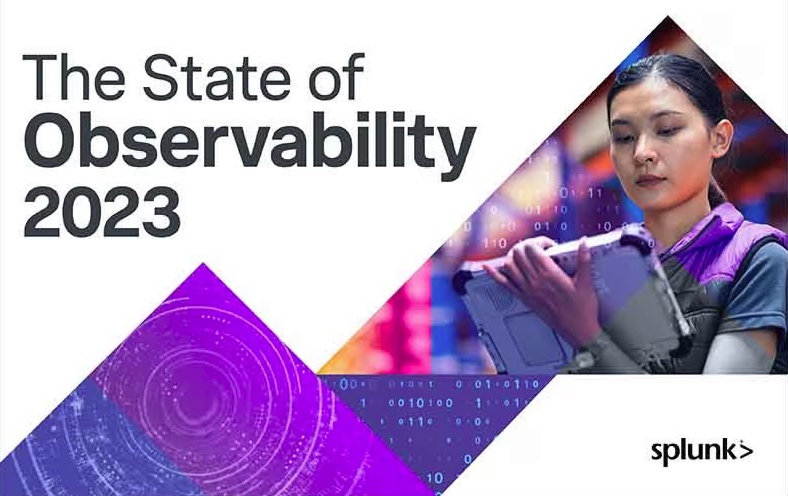
Observability has matured beyond its early adopter position and is now foundational for modern enterprises to achieve full visibility into today's complex technology environments, according to The State of Observability 2023, a report released by Splunk in collaboration with Enterprise Strategy Group.

The research shows that observability is instrumental in reducing outages, improving app reliability, growing revenue, strengthening customer experience (CX) and establishing digital resilience.
A key finding is how observability leaders are four times as likely to resolve instances of unplanned downtime in minutes, versus hours or days. This is notable as 76% of all respondents report that downtime can cost up to $500,000 per hour. It's clear that a faster approach to issue resolution can drive significant cost savings.
Key findings from the research also include:
Fewer outages, disruptions to customers
Leaders experience 33% less outages per year than beginners. (On average, beginners report six outages, while leaders experience two.)
Greater visual clarity drives ROI
Due to observability, a little over 80% of organizations can find and fix problems faster. In addition, 81% can see into hybrid ecosystems.
Stronger assurance to meet reliability goals
89% of leaders are completely confident in their ability to meet availability and performance requirements for their applications, 3.9x the rate of beginners.
Hybrid will persist
Organizations report maintaining 165 business applications (on average), with about half in the public cloud and half on-premises. As the number of apps grows, observability will remain vital to unify visibility across environments.
AIOps instrumental to CX
AIOps capabilities included in an observability practice outperform legacy solutions, by automatically determining the technical root cause of an issue (according to 34% of respondents,) to predicting problems before they turn into customer-impacting incidents (31%), to better assessing the severity of an incident (30%).
Resilience as North Star
95% say their observability leaders are collaborating more with line-of-business leaders on resilience strategies, which includes investing in solutions that recover customer services faster and remediate incidents more efficiently.
Communications and media lead in maturity
Communications and media companies are leading the way on observability savviness, with 13% tallied as leaders. Manufacturing and financial services followed with 8% categorized as leaders.
Public sector makes gains with leaders
The public sector tallied 4% as observability leaders, increasing from 0% in 2022, showing an opportunity for growth.
Unifying security monitoring and observability
The report shows how more organizations are unifying security monitoring and observability to obtain richer context on incidents and accelerate resolution, in comparison to last year. The reasons all respondents are choosing to unify include:
■ More granular and precise threat detection. 59% of all respondents uncover security issues more effectively, thanks to intelligence and correlation capabilities native to observability solutions.
■ A comprehensive approach. 55% uncover and assess more security vulnerabilities, thanks to the visibility afforded by observability solutions.
■ Ability to act quicker. 51% take action on security issues faster, thanks to the remediation capabilities of observability solutions.
"With the rising complexity of today's technology environments and the direct connection between reducing disruptions and optimal customer experiences, observability is fundamental to the successful operations of modern businesses," said Spiros Xanthos, SVP and GM for the Observability business at Splunk. "Observability enables businesses to keep their software and infrastructure reliable, systems secure and customers happy, making it a critical component to any organization's resilience strategy."
Methodology: The report defines observability leaders as organizations with at least 24 months of experience with observability. In addition, leaders achieved the highest rank in these five factors: the ability to correlate data across all observability tools, the adoption of AI/ML technology within their observability toolset, skills specialization in observability, the ability to cover both cloud-native and traditional application architectures and the adoption of AIOps.
The global survey was conducted from early December 2022 to mid-January 2023. The report surveyed 1,750 IT operations, application development and engineering leaders from organizations with 500 or more full-time employees and who are knowledgeable about their organization's observability practice. The survey respondents were drawn from 10 countries: Australia, Canada, France, Germany, India, Japan, New Zealand, Singapore, UK and US.
